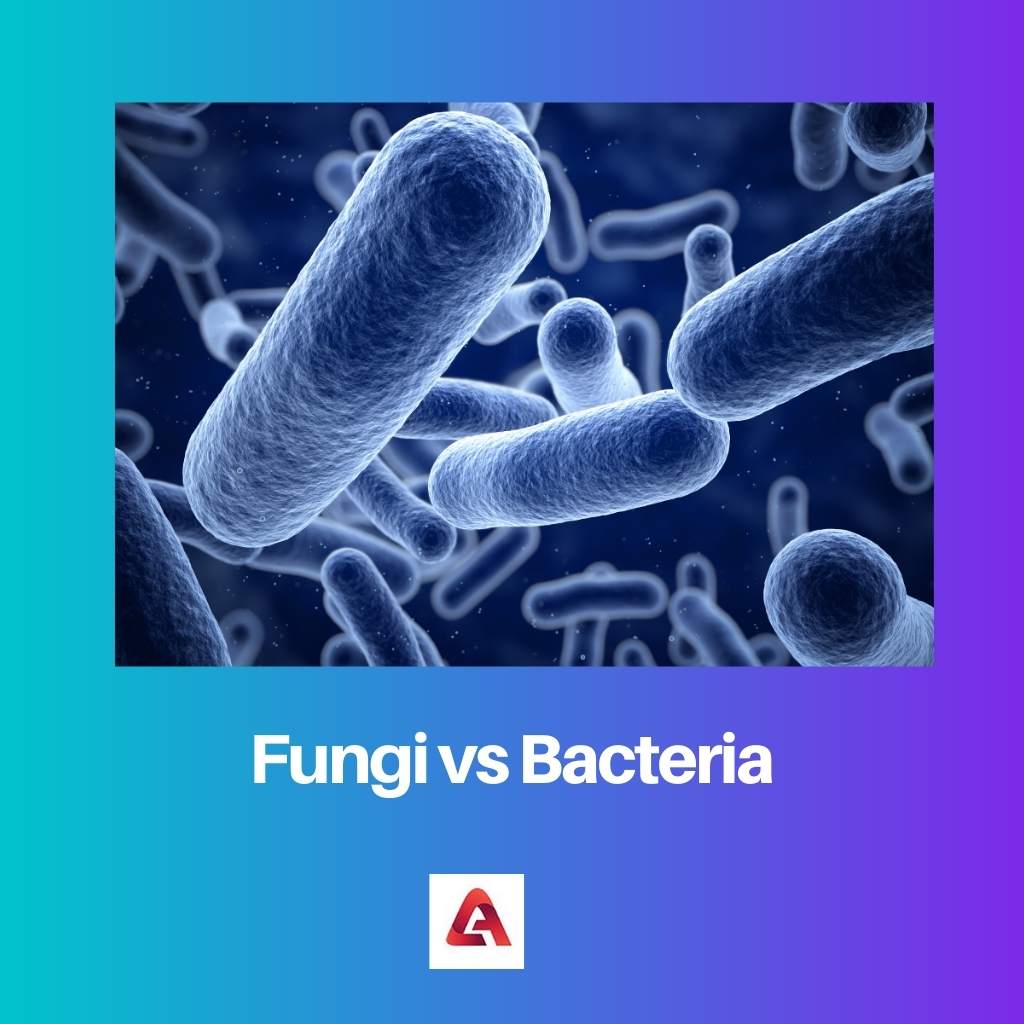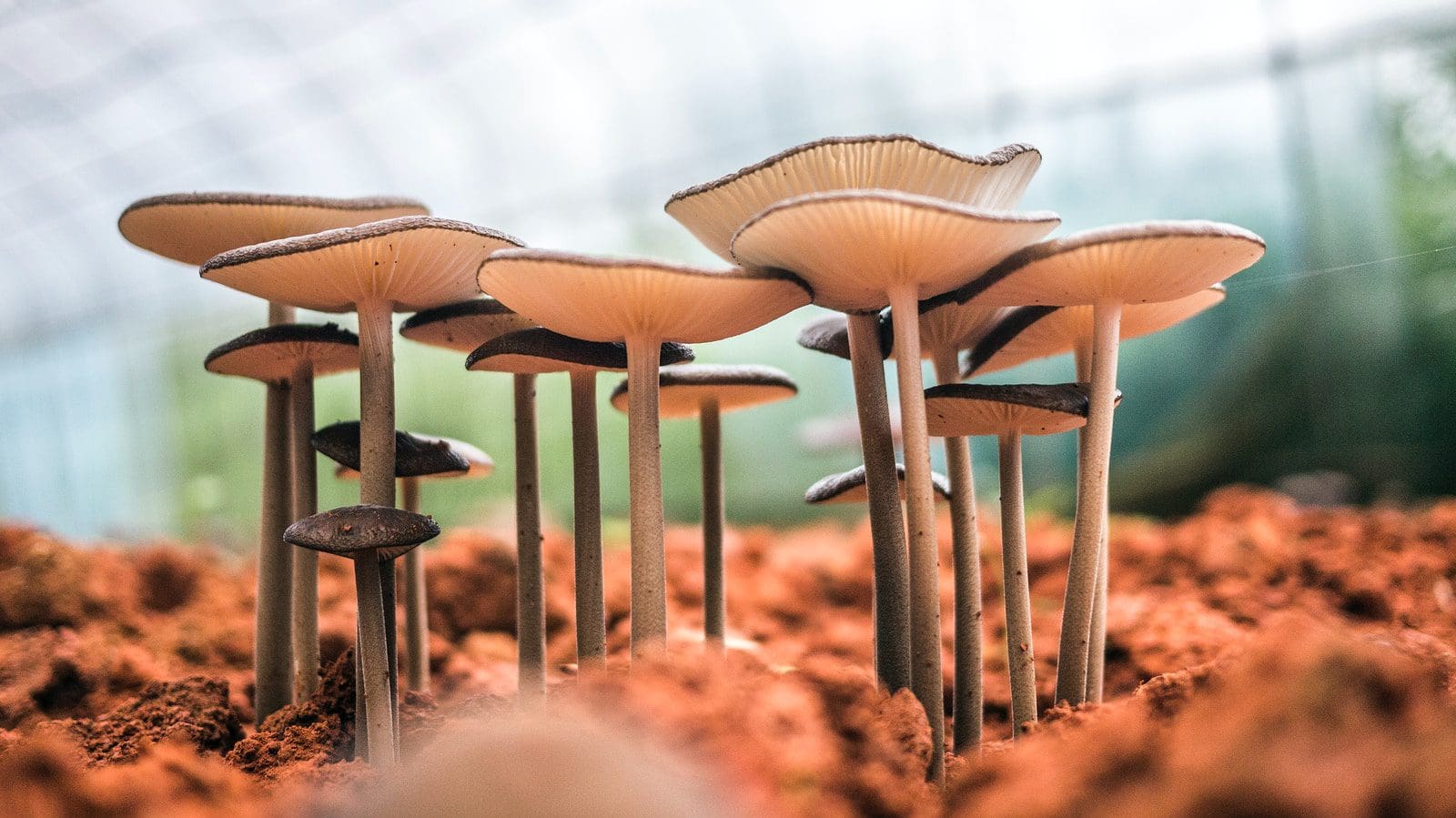We can see many beautiful and natural things around us, but there are some things that we can not see with our naked eyes. Some of these are microbes divided into many types according to their cell type, structure, etc.
Key Takeaways
- Fungi are eukaryotic organisms that have a nucleus and membrane-bound organelles, while Bacteria are prokaryotic organisms that lack a nucleus and membrane-bound organelles.
- Fungi are multicellular, while Bacteria are unicellular.
- Fungi are heterotrophs that absorb nutrients, while Bacteria can be either heterotrophic or autotrophic and obtain nutrients through various means.
Fungi vs. Bacteria
Fungi are eukaryotic cell means it has a proper cell structure, and their cell wall contains chitin. On the other hand, Bacteria is a prokaryotic cell with no good design. It lacks nucleus and cell organelles, and its cell wall contains peptidoglycan.

Fungi are a kind of microbes that can be differentiated as they chitin in their cell wall. They are the type of eukaryotic cell, so they have a proper nucleus and many other cell organelles.
In contrast, Bacteria are also a kind of microbes. They have peptidoglycan in their cell wall. They are categorized as prokaryotes as they don’t have a proper cellular structure, and they lack nuclei and cell organelles.
Comparison Table
| Parameters of Comparison | Fungi | Bacteria |
|---|---|---|
| Definition | Fungi are eukaryotic cells with chitin in their cell wall. | Bacteria are prokaryotic cells with an embryonic nucleus. |
| Size | Its size can be 2 to 10 micrometers. | Its size can be 0.5 to 5 micrometers. |
| Shape | It can have various shapes, but most of them are thread-like structures. | It has three different structures, i.e., round, rod-shaped, and spiral. |
| pH | The best pH for the growth of fungi is 4 to 6 pH. | Bacteria prefer a neutral range of 6.5 to 7 pH. |
| Example | Yeast and mushrooms are examples of fungi. | Escherichia coli, Salmonella Typhi, and Staphylococcus aureus are examples of bacteria. |
What is Fungi?
Fungi are eukaryotic cells that have chitin in their cell wall. Fungi is a plural word. The singular of fungi is a fungus. Some fungi look green in color, but they do not do photosynthesis.
Normally, fungi do not move from one place to another, but they grow and spread as means of traveling from one place to another, and some fungi in the form of spores can change their place from time to time with the help of air and water. They also work as decomposers in our ecosystem.
Fungi have some features, like plants. For example, they are immobile and, in some cases, bear fruits like mushrooms.
Fungi are also helpful for us in many ways. The process of fermentation with the help of fungi helps in food preparations. They are used to prepare loaves of bread, cheese, wine, etc.

What is Bacteria?
Bacteria word is the plural of bacterium. They are microbes categorized as prokaryotes and have an incipient nucleus. They are believed to be the first thing on this earth that has life.
Bacteria are microscopic; it ranges from 0.5 to 5 micrometers. Most bacteria are found in three shapes spherical, rod-shaped, and spiral form.
Bacteria are unicellular and reproduce using an asexual method like binary fission. Bacteria cell life is only 20 to 30 minutes, but it can quickly multiply. On average, Bacteria can grow double in only 10 minutes.
Bacteria can cause many diseases like Tuberculosis, Cholera, Leprosy, Rabies, etc. These diseases can even kill a person, but bacteria also give life to human beings as they are essential in utilizing Vitamin B12, and some good bacteria are present in the human body.

Main Differences Between Fungi and Bacteria
- Fungi have various shapes, but most are in thread-like structures, while Bacteria can be mainly found in three forms: rod-shaped, Spiral, and spherical.
- The mode of reproduction in fungi can be sexual as well as asexual. On the other hand mode of reproduction in bacteria is asexual.

- https://www.sciencedirect.com/science/article/pii/S1389172312000266
- https://link.springer.com/content/pdf/10.1007/BF00317161.pdf
Last Updated : 11 June, 2023

Piyush Yadav has spent the past 25 years working as a physicist in the local community. He is a physicist passionate about making science more accessible to our readers. He holds a BSc in Natural Sciences and Post Graduate Diploma in Environmental Science. You can read more about him on his bio page.

This article was too technical and wordy for my taste. I understand the importance of the topic but not an engaging read for me.
I see your point, but I appreciated the level of detail put into it. It’s helpful for academic or scientific purposes.
I appreciate the level of research and data backing the article’s content. Extremely well-documented.
Agreed, the article was rich in references and thoroughly researched. A scholarly piece.
The article was a bit dry, but it served its purpose in presenting the differences between fungi and bacteria effectively.
Yes, the straightforward representation made it easy to comprehend for anyone interested in the subject.
I would have appreciated a bit more humor in discussing microbes, considering the complexity of the topic.
The article was enlightening, although the section on bacteria felt a bit dry compared to the fungi explanation.
I can see why you’d think that. Maybe additional examples or comparisons would have helped balance it out.
Exactly, it needed a bit more life. Perhaps anecdotes or practical daily-life applications could have spiced it up.
The article was quite detailed; the comparison table was especially useful for quick references.
This article provided a great comparison between fungi and bacteria. Very informative and well-researched.
I agree, it was loaded with useful information and references.
I really liked how comprehensive and in-depth this article is. It was a very educational read.
Yes, it was incredibly detailed and I learned so much. I particularly liked the explanation of the difference in their modes of reproduction.
I found the explanations about fungi and bacteria’s characteristics to be clear and easy to understand.
I found this article to be quite insightful. The details regarding their characteristics and differences were interesting.
Absolutely! I think it was a comprehensive dissection of the topic, and well-structured.
I couldn’t agree more. The depth of comparison helped in understanding them better.